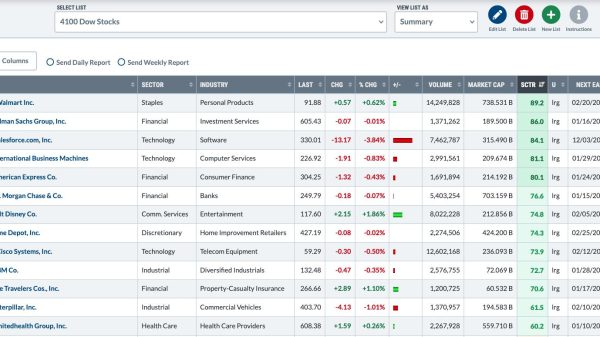Cryptocurrencies have evolved significantly since the inception of Bitcoin in 2009. While Bitcoin introduced the world to blockchain technology and digital currencies, it has its own set of limitations.
One of the notable limitations is its reliance on a single algorithm for its proof-of-work (PoW) consensus mechanism. It provides a streamlined and user-friendly experience, catering to both novices and seasoned traders in the cryptocurrency space. In contrast, Digibyte, another prominent cryptocurrency, has adopted a multi-algorithm approach. This article explores the significance of this multi-algorithm approach, comparing Bitcoin and Digibyte in depth. Want to get a better understanding of investing? Visit Immediate Core now and start learning from experts.
The Genesis of Bitcoin: Single-Algorithm Proof-of-Work
Satoshi Nakamoto’s vision and the creation of Bitcoin
Satoshi Nakamoto’s whitepaper introduced Bitcoin as a decentralized digital currency that relied on a PoW consensus mechanism. This mechanism used the SHA-256 algorithm to secure the network, validate transactions, and mint new coins.
The role of SHA-256 in Bitcoin’s proof-of-work
SHA-256, short for Secure Hash Algorithm 256-bit, is a cryptographic hash function. It plays a central role in the PoW process by requiring miners to find a hash value below a certain target, which is a computationally intensive task.
The advantages and limitations of Bitcoin’s single-algorithm approach
While SHA-256 provides robust security, Bitcoin’s single-algorithm approach has limitations. It can lead to mining centralization as it favors miners with access to specialized hardware, known as ASICs. This centralization raises concerns about network security and resilience.
Digibyte: A Multi-Algorithm Pioneer
The birth of Digibyte and its founder, Jared Tate
In 2013, Jared Tate created Digibyte with the goal of improving upon Bitcoin’s limitations. Tate recognized the need for a more secure and decentralized blockchain.
Digibyte’s innovative multi-algorithm consensus
Digibyte introduced a unique PoW mechanism that utilizes five different mining algorithms: SHA-256, Scrypt, Skein, Qubit, and Odocrypt. Each algorithm is responsible for a different aspect of the blockchain, enhancing security and decentralization.
How Digibyte addresses the limitations of Bitcoin’s single-algorithm approach
Digibyte’s multi-algorithm approach mitigates the risk of centralization by allowing a wider range of miners to participate. It also increases the network’s security by making it more resistant to 51% attacks, where a malicious miner gains control of the majority of the network’s hash rate.
The Benefits of Multi-Algorithms in Digibyte
Enhanced security through multiple algorithms
By using multiple algorithms, Digibyte reduces the risk of a single algorithm becoming vulnerable to attack. This diversity enhances the network’s overall security and stability.
Resistance to centralization and 51% attacks
Digibyte’s multi-algorithm approach makes it significantly more challenging for any single entity to control a majority of the network’s mining power. This resistance to centralization improves the network’s long-term viability.
Increased decentralization and network resilience
The inclusion of multiple algorithms encourages a broader and more diverse mining community, promoting decentralization. Furthermore, it enhances network resilience, making it more robust in the face of adversarial attacks.
Comparative Analysis: Bitcoin vs. Digibyte
Scalability: How multi-algorithms affect transaction throughput
While Digibyte’s multi-algorithm approach offers advantages in terms of security, it can also lead to scalability challenges. The increased complexity may affect transaction throughput compared to Bitcoin.
Energy efficiency: A look at the environmental impact
Bitcoin’s energy-intensive PoW algorithm has drawn criticism for its environmental impact. Digibyte’s multi-algorithm approach may be more energy-efficient due to its diversified mining methods.
Security and resistance to mining centralization
Digibyte’s multi-algorithm approach has proven effective in resisting mining centralization, offering enhanced security compared to Bitcoin. This is a key consideration for long-term blockchain sustainability.
Challenges and Criticisms
Potential vulnerabilities in Digibyte’s multi-algorithm approach
While Digibyte’s approach has numerous advantages, it is not without potential vulnerabilities. Careful monitoring and continuous development are required to address any emerging issues.
Scalability concerns and network congestion
As Digibyte’s popularity grows, it may face scalability challenges due to its multi-algorithm approach. Ensuring smooth network operation will be crucial in the face of increasing demand.
Community debates and adoption challenges
The adoption of Digibyte’s multi-algorithm approach has sparked debates within the cryptocurrency community. Achieving widespread acceptance and integration into existing financial systems presents significant challenges.
The Future of Multi-Algorithm Blockchains
Exploring other cryptocurrencies adopting a similar approach
Digibyte’s success with multi-algorithms may inspire other blockchain projects to explore similar consensus mechanisms. This could lead to innovations in blockchain technology.
Potential use cases beyond digital currency
The versatility of multi-algorithm blockchains like Digibyte opens doors to various applications beyond digital currency, including decentralized applications (dApps) and secure data storage.
The role of multi-algorithms in the evolving blockchain landscape
Multi-algorithm blockchains could play a pivotal role in shaping the future of blockchain technology. Their ability to address the shortcomings of single-algorithm PoW systems offers promising possibilities.
Conclusion
In conclusion, Digibyte’s multi-algorithm approach represents a significant innovation in the world of cryptocurrencies. By addressing the limitations of Bitcoin’s single-algorithm PoW, it enhances security and decentralization. While challenges and debates remain, the future looks promising for multi-algorithm blockchains, offering new opportunities for the blockchain landscape to evolve and mature.
Read more:
Digging Deep: Bitcoin and Digibyte’s Multi-Algorithm Approach
























